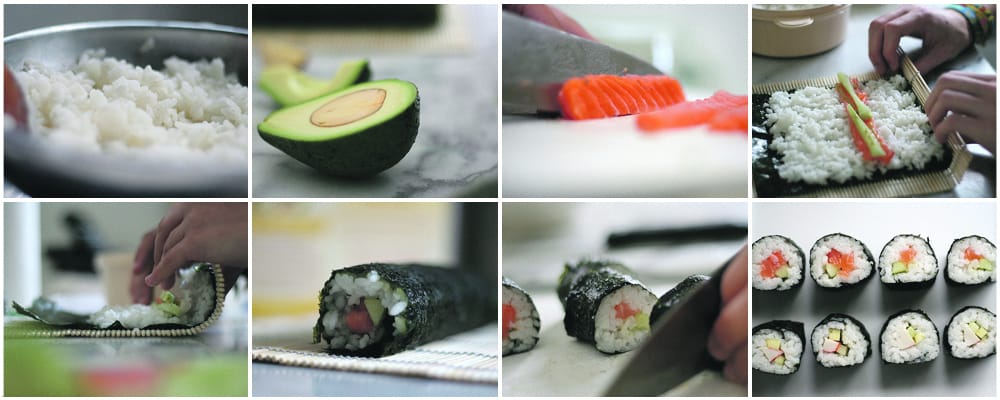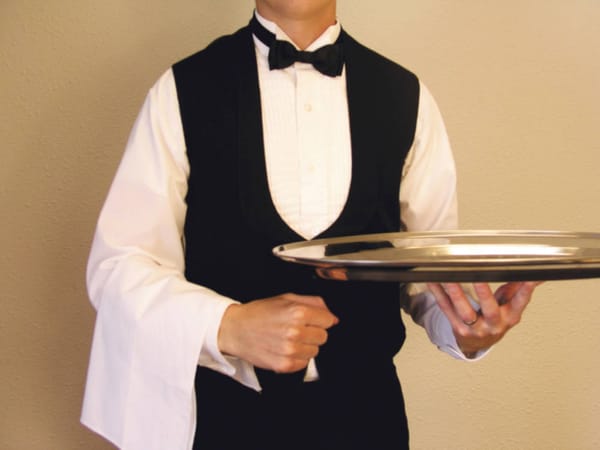Homemade sushi
Source, prepare and make your own sushi, made easy.

Japanese food is widely associated with expensive prices and not a lot of food. However that doesn’t always have to be the case. All you need to do is equip yourself with a tube map and a willingness to travel.
The best part of making your own sushi is that you can add any fish, seafood, meat or vegetables - it’s completely up to you. There are classic sushi combinations such as the Californian roll, salmon skin roll and soft shell crab roll; however nobody’s stopping you from experimenting. You only need to make your way down to Billingsgate at the crack of dawn to see that there is more to fish and seafood than Sainsbury’s ‘Fresh Fish’ counter - the word “fresh” being the overstatement of the year, as highlighted by Hugh Fearnley-Whittingstall’s recent campaign on ‘Big Fish Fight’. So if you fancy yellowtail tuna, razor clam or some fatty tuna, alter the following recipe as required, because I’m sticking to the basic Californian roll.
Get yourself equipped with:
A rolling mat (Makisu) *
Nori seaweed sheets *
3 cups sushi rice *
3 ¼ cups water
1/3 cup rice vinegar *
3 tbsp sugar
1 tbsp salt
Several crabsticks (defrosted)
A semi-ripe avocado
A cucumber
Wasabi *
Soy Sauce
A sharp knife
- These products are available in Sainsbury’s or Tesco, but you can also find them at Japanese grocery shops such as Japan Centre (14-16 Regent Street, SW1Y 4PH. Nearest tube station: Piccadilly Circus). Some of these items are optional i.e. nori seaweed and a rolling mat is not needed when making nigiri (sushi rice topped with a slice of fish)
– First, you need to prepare the sushi rice. Rice is generally prepared with a 1:1 ratio with one part rice to one part water. As soon as the rice begins to boil, lower the heat and let it simmer for 20 minutes. Remove the rice from the heat. Prepare the rice vinegar mixture by mixing the rice vinegar, sugar and salt together on low heat. This is added whilst the rice is cooling. Gently add the mixture to the rice while stirring with a wooden spoon to evenly distribute the mix. Fan the rice mixture to cool and remove the moisture of the rice, giving it a shiny look. Now that the rice is ready, the main ingredients can be prepared.
– Split the crab sticks by pulling them lengthways into long strips approximately half the original size. Halve the avocado with a large knife, twisting it around the stone to separate. Remove the stone and cut the avocado into 1cm x 1cm long strips. Cut the cucumber into 1cm x 1cm long strips also.
– Now take a sheet of nori seaweed and place it on the rolling mat. Spread about a cup of rice on the sheet of nori, leaving one inch of space on the other end (see the top right photo). The rice does not need to be packed tightly, and should be less than ¼ inch thick, so don’t worry if you can see the blackness of the seaweed through the rice. Less is more.
– Place the avocado slices on top of the rice near the edge that does not have uncovered nori (see photo), ensuring that the length of the rice is covered. Add the crabstick and cucumber strips likewise.
– Now here we go with the rolling. Slowly fold the mat over, tucking the end of the nori to start a roll. Keep lifting up the mat as you go to compress the sushi roll. Lessen the pressure slightly to straighten out the roll, if needed. Then continue rolling with medium pressure until it is complete.
– Remove the sushi roll from mat and immediately cut into 6 or 8 even pieces. Important tip: keep the knife very moist to prevent sticking, remoistening before each cut. Cut in one swift downward movement. Don’t shear the sushi by cutting to and fro, as this will lead to an awkward shape. Turn the pieces on end and arrange on platter.
Tip: Some sushi bars make an “inside out” California roll. The rice is spread all over the nori (there is no uncovered edge as above). The nori is turned over onto cling film so it is rice side down. The ingredients are placed on one edge and the roll is rolled as before. After rolling, the roll is rolled in toasted sesame seeds prior to cutting. Optionally, flying fish roe can be used in place of the sesame seeds (it actually tastes better, but I can only find it at Japan Centre and is a bit pricey).









